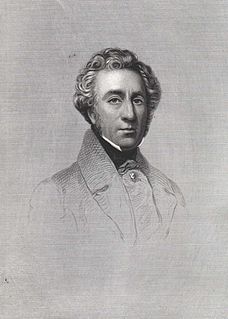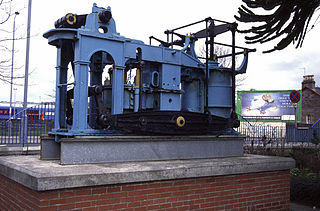Related Research Articles

A steamship, often referred to as a steamer, is a type of steam-powered vessel, typically ocean-faring and seaworthy, that is propelled by one or more steam engines that typically move (turn) propellers or paddlewheels. The first steamships came into practical usage during the early 1800s; however, there were exceptions that came before. Steamships usually use the prefix designations of "PS" for paddle steamer or "SS" for screw steamer. As paddle steamers became less common, "SS" is assumed by many to stand for "steamship". Ships powered by internal combustion engines use a prefix such as "MV" for motor vessel, so it is not correct to use "SS" for most modern vessels.

A steamboat is a boat that is propelled primarily by steam power, typically driving propellers or paddlewheels. Steamboats sometimes use the prefix designation SS, S.S. or S/S or PS ; however, these designations are most often used for steamships.

A paddle steamer is a steamship or steamboat powered by a steam engine that drives paddle wheels to propel the craft through the water. In antiquity, paddle wheelers followed the development of poles, oars and sails, where the first uses were wheelers driven by animals or humans.

John Laird was a shipbuilder and key figure in the development of the town of Birkenhead. He was the elder brother of Macgregor Laird. He was one of the first to use iron in the construction of ships.

Ailsa Shipbuilding Company was a Scottish shipbuilding company based in Troon and Ayr, Ayrshire.

William Denny and Brothers Limited, often referred to simply as Denny, was a Scottish shipbuilding company.

Robert Napier was a Scottish marine engineer known for his contributions to Clyde shipbuilding.

George Thompson (1804–1895) was a Scottish Liberal politician who was The Lord Provost of Aberdeen and MP for city. He was also the founder of the Aberdeen Line shipping company.
George Forrester and Company was a British marine engine and locomotive manufacturer at Vauxhall Foundry in Liverpool, established by Scottish engineer George Forrester. The company opened in 1827 as iron founders and commenced building steam locomotives in 1834.

Steamboats operated on Grays Harbor, a large coastal bay in the State of Washington, and on the Chehalis and Hoquiam rivers which flow into Grays Harbor near Aberdeen, a town on the eastern shore of the bay.
John Burns, 1st Baron Inverclyde, was a ship owner. Born in Glasgow he was the son of Sir George Burns, 1st Baronet, a founder of the shipping company G & J Burns and a partner in the Cunard Steamship Co. and his wife, Jane Cleland. After school, he attended Glasgow University and took the general arts degree before joining the family firm about 1850. He married Emily, daughter of George Clerk Arbuthnot, with whom he had two sons and three daughters.
Alexander Hall and Sons was a shipbuilder that operated in Aberdeen from 1797 to 1957.
John Payne Ltd was a shipbuilder in Bristol, England, who built coastal colliers and cargo ships, and small craft such as tugs, during the 19th and 20th centuries.
Events from the year 1850 in Scotland.
Events from the year 1843 in Scotland.
Events from the year 1815 in Scotland.

Queen of Scotland was the first steamship on the Aberdeen-London service, and the first paddle steamer built in Aberdeen's shipyards. Duffus & Co. ceased business in 1846. Launched in 1827 by Duffus & Co., the vessel was involved in an accident in 1833 at Northfleet, when the steamship ran down the 410 ton United Kingdom, a rum and sugar vessel arrived from Jamaica. Queen of Scotland, though wooden-hulled, was undamaged and continued to serve the route.

Messrs Robert Napier and Sons was a famous firm of Clyde shipbuilders and marine engineers at Govan, Glasgow founded by Robert Napier in 1826. It was moved to Govan for more space in 1841. His sons James and John were taken into partnership in 1853.
PS Premier was a British paddle steamer that was noted for her longevity. She was built in Scotland in 1846, spent much of its career on the south coast of England and was scrapped in 1938.
References
- ↑ W. Hamish Fraser, Clive Howard Lee Aberdeen, 1800-2000: A New History 1862321086 2000 - Page 76 "The others were all smaller concerns, of which the best known was John Duffus & Co. A later, but ... This was a wooden-hulled coastal paddle steamer, the Queen of Scotland, built for the Aberdeen Steam Navigation Co. Aberdeen's first ..."
- ↑ Nick RobinsCoastal Passenger Liners of the British Isles (illustration)
- ↑ Scottish Economic & Social History 1983 - Volume 3 - Page 72 "... major firms, John Duffus & Co., ceased business in 1846 as a consequence. Most of those thrown out of work did find alternative employment, however. "